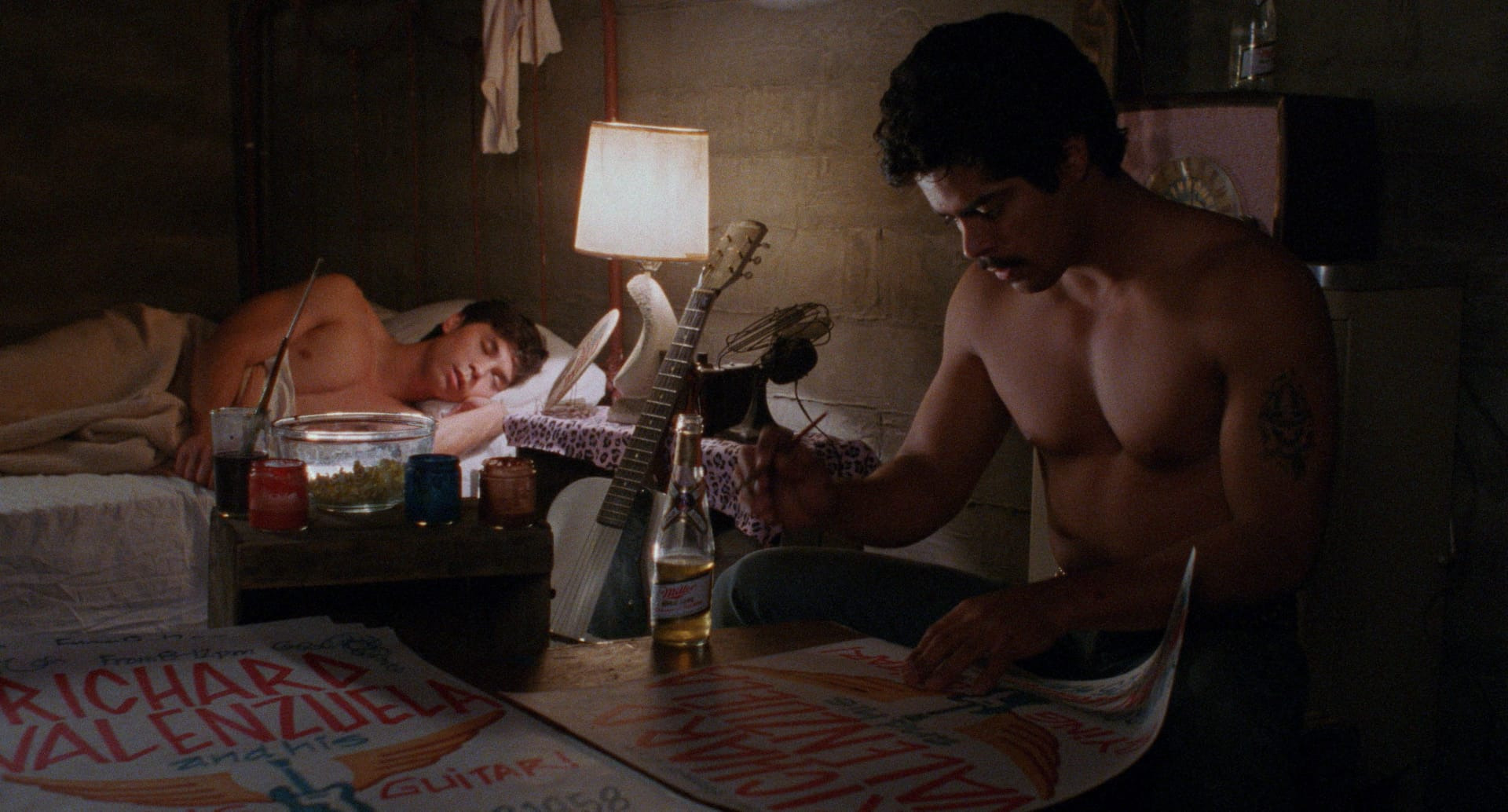La Bamba: American Dreaming, Chicano Style

A traumatic memory, awash in hazy neutral tones, arising as a nightmare. Santo & Johnny’s mournful “Sleep Walk” playing. A sudden death, foreshadowing the passing of a star far too young. The opening sequence of Luis Valdez’s La Bamba (1987) feels like it could be from another film—what follows is largely a celebration of life and music. But that melancholy beginning is apt, lending a lingering, foglike grief to the story, a grief still felt more than six decades after the tragic loss of Ritchie Valens—born Richard Valenzuela—who carried a community proudly on his shoulders as he climbed his way to short-lived fame.
Written and directed by Valdez, La Bamba is an underdog story about the Mexican American singer Valens, known as the godfather of Chicano rock, who died at the age of seventeen in a plane crash, alongside Buddy Holly and J. P. “The Big Bopper” Richardson, on what is often referred to as “The Day the Music Died.” The script was inspired by memories that the Valenzuela family shared with Valdez and by certain well-known events in the musician’s career, but facts about his life are otherwise scant. He’d only had three hits when his burgeoning career was cut short. The very few interviews he gave during his six to eight months of fame, mainly to promote his music on the radio, have been lost and now survive only in faded, unreliable secondhand stories. Valdez gathered all he could find to write the script, marinating every scene in what he knew best: what it was to be Chicano—a chosen identity for a community of Latinos born in the United States, largely Mexicans and Mexican Americans from Texas and Southern California—our flaws, our beauty, and our resilience.
Born on May 13, 1941, in the Pacoima neighborhood of Los Angeles, to a family of munitions-plant and farm workers, “Richie”—as his mother, Connie, called him—lived with his father, Steve, until his death when Richie was ten. Having left the family home when she separated from his father, his mom moved back shortly after Steve’s death, bringing his older half-brother, Bob, and three younger half-siblings with her. Little is known about Valens’s life from ages ten to sixteen, and the film doesn’t try to fill in the gaps. The movie starts with glimpses of Richie working in the fields and living at times in el campo. Though making up only ten minutes of the film, these scenes offer a powerful vision of what life might have been like for a young Chicano man in that era: poor, hot, sweaty, crowded. But it was home. It was a life the writer-director knew himself, and he breathes lived-in authenticity into every shot: Richie waking from an uncomfortable sleep to the sound of a baby crying, the scents of his mother’s cooking, eggs and onions and tortillas, coming from the fire next to them; wiping sweat from his brow, under the bright and bold heat, as he picks fruit from a tree.







